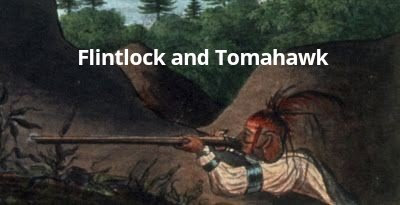 Canadian biographical dictionary entry quoted below
Canadian biographical dictionary entry quoted below The American Revolutionary War was now raging. Rogers, no politician, might have fought on either side, but for him neutrality was unlikely. His British commission made him an object of suspicion to the rebels. He was arrested in Philadelphia but released on giving his parole not to serve against the colonies. In 1776 he sought a Continental commission, but General George Washington distrusted and imprisoned him. He escaped and offered his services to the British headquarters at New York. In August he was appointed to raise and command with the rank of lieutenant-colonel commandant a battalion which seems to have been known at this stage as the Queen’s American Rangers. On 21 October this raw unit was attacked by the Americans near Mamaroneck, New York. A ranger outpost was overrun but Rogers’ main force stood firm and the attackers withdrew. Early in 1777 an inspector general appointed to report on the loyalist units found Rogers’ in poor condition, and he was retired on half pay. The Queen’s Ran
 gers, as they came to be known, later achieved distinction under regular commanders, notably John Graves Simcoe.
gers, as they came to be known, later achieved distinction under regular commanders, notably John Graves Simcoe.Rogers’ military career was not quite over. Returning in 1779 from a visit to England, he was commissioned by General Sir Henry Clinton – who may have been encouraged from London – to raise a unit of two battalions, to be recruited in the American colonies but organized in Canada, and known as the King’s Rangers. The regiment was never completed and never fought. The burden of recruiting it fell largely on Rogers’ brother James, also a ranger officer of the Seven Years’ War. Robert by now was drunken and inefficient, and not above lying about the number of men raised. Governor Frederick Haldimand wrote of him, “he at once disgraces the Service, & renders himself incapable of being Depended upon.” He was in Quebec in 1779–80. At the end of 1780, while on his way to New York by sea, he was captured by an American privateer and spent a long period in prison. By 1782 he was back behind the British lines. At the end of the war he went to England, perhaps leaving New York with the British force at the final evacuation in 1783.
Notes on the illustrations
I'm not sure where the original of this painting (thought to be Robert Rogers in the uniform of the early Queen's or the King's Rangers which he formed) is. It look like it uses the same old studio props in West's paintings and more. There is some who reckon the 'Ranger' in the Death of Wolfe is in a Queen's Ranger uniform of that time.
Queen's Rangers reenactment in the US



No comments:
Post a Comment